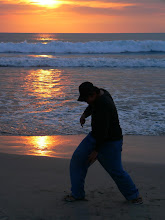From the looks of Windows XP SP2, it seems that Microsoft thinks that users are the weak link in the security chain. We do stupid things, such as download files, and then--fools that we are--we actually open them.
Because SP2 deems it important to protect you against yourself, it goes to great lengths to keep you from receiving e-mailed file attachments that might carry worms and viruses. For the same reason, it makes sure--by asking you again and again--if you know what you're doing when you download files from Web sites, also a potentially dangerous practice.
This may make sense if you're my mom, who doesn't know a computer virus from a flu shot. But to many of us, this dumbing-down smacks of some serious blame-shifting. Or at the very least, it gets downright annoying.
To get back your self-respect, try these tips.
1. Take control of Outlook Express.
The new Outlook Express in SP2 doesn't let you receive attachments in some file formats, such as .exe and .scr, that have traditionally been used by worms and viruses to deliver their payloads. But this draconian measure also blocks legitimate transfers. To get back the ability to accept these files--of course, keeping in mind that you'll have to carefully consider each download to protect yourself--follow these steps:
Because SP2 deems it important to protect you against yourself, it goes to great lengths to keep you from receiving e-mailed file attachments that might carry worms and viruses. For the same reason, it makes sure--by asking you again and again--if you know what you're doing when you download files from Web sites, also a potentially dangerous practice.
This may make sense if you're my mom, who doesn't know a computer virus from a flu shot. But to many of us, this dumbing-down smacks of some serious blame-shifting. Or at the very least, it gets downright annoying.
To get back your self-respect, try these tips.
1. Take control of Outlook Express.
The new Outlook Express in SP2 doesn't let you receive attachments in some file formats, such as .exe and .scr, that have traditionally been used by worms and viruses to deliver their payloads. But this draconian measure also blocks legitimate transfers. To get back the ability to accept these files--of course, keeping in mind that you'll have to carefully consider each download to protect yourself--follow these steps:
- In Outlook Express, click Tools/Options > Security.
- Clear the "Do not allow attachments to be saved or opened that could potentially be a virus" box.
- Click OK.
2. Tell Internet Explorer to shut up.
Windows now puts up an annoying warning when you try to run a file downloaded from a Web site if that file doesn't include a digital signature. This may be good for you--it could stop you from falling victim to a phishing scam or other Web-based attack--but if you are very, very careful and feel you know how to identify these threats yourself, you can do the following to stop the alerts:
- In Internet Explorer, click Tools/Internet Options > Advanced.
- Under Security, clear the "Check for signatures on downloaded programs" box.
- Click OK.
3. Download like you used to.
After installing SP2, you'll have to actually click a link to start a download from Internet Explorer. That means the common download site technique of "Your download will start automatically in 10 seconds" no longer works. Instead, IE puts yet another warning, this time in what it calls the Information Bar (the section directly under the toolbars and above the browser display window), to tell you that you're doing something stupid. Although CNET's sister site Download.com has been tweaked to work smoothly with SP2, other major download destinations, such as tucows.com and majorgeek.com, haven't. To get back your dream of easy downloads, follow these steps:
After installing SP2, you'll have to actually click a link to start a download from Internet Explorer. That means the common download site technique of "Your download will start automatically in 10 seconds" no longer works. Instead, IE puts yet another warning, this time in what it calls the Information Bar (the section directly under the toolbars and above the browser display window), to tell you that you're doing something stupid. Although CNET's sister site Download.com has been tweaked to work smoothly with SP2, other major download destinations, such as tucows.com and majorgeek.com, haven't. To get back your dream of easy downloads, follow these steps:
- In Internet Explorer, click Tools/Internet Options > Security.
- Click the Internet icon, then the Custom Level button.
- Under Downloads, check the radio button marked Enable under the heading "Automatic prompting for file downloads."
- Click OK here and in the next dialog.






No comments:
Post a Comment